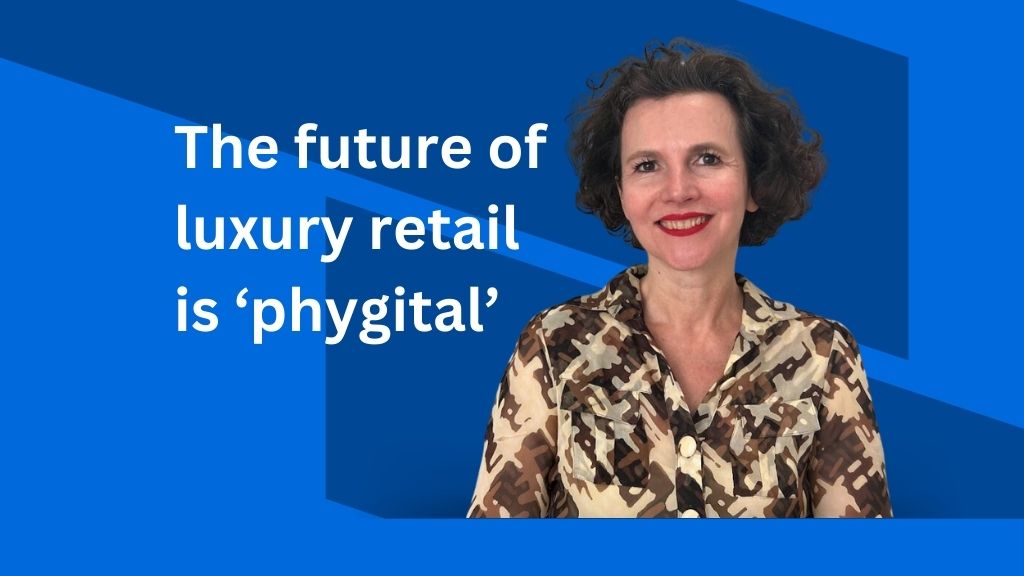By Alice Schaffer, Strategy Partner, Leagas Delaney
It might be one of the most polarising words in modern marketing, but there’s no doubt the future of luxury is phygital. The blending of physical and digital experiences is beginning to transform the way consumers experience brands today, and the luxury sector has been working hard to innovate and adapt.
Luxury customers are naturally demanding. They want unique experiences and perks, rich brand stories and status, and an equal measure of heritage and fresh ideas. Perhaps most importantly, they expect luxury brands to be leaders within culture.
So, retailers like Chanel and Coach have already been digitally enhancing their in-store experiences, from AI-driven personal shopping to AR mirrors and virtual fitting rooms. Beyond retail, Web3 and virtual worlds are opening up new spaces for consumers to engage with brands.
There is, however, a catch. Luxury brands have a tricky tightrope to walk when it comes to phygital, needing to balance exclusivity with availability and timelessness with innovation. They need to amplify, not dilute, their brand’s heritage and identity while keeping in step with the digital requirements of a modern world.
Nevertheless, the industry’s phygital transformation is already well on its way. The question is, what’s next?
NFTs aren’t dead – they’re evolving
NFTs (non-fungible tokens) might have experienced a dramatic fall from grace in the crypto-investment world, but they’ve found a new purpose in the luxury market as exclusive online status symbols for high-net-worth customers.
These unique digital assets can’t be replicated and ownership is publicly recorded on the blockchain forever, making the buyer an indisputable part of the brand’s history. For collectors and brand enthusiasts, that’s an offer that’s hard to refuse.
So, in luxury, NFTs are here to stay. Louis Vuitton launched its fourth – an $8,000 phygital jacket – in April this year, available only to the 200 members of its uber-exclusive Web3 community, VIA. Buyers not only take ownership of the digital asset but will also receive the physical jacket by the end of this year, neatly linking its online and offline existence.
Louis Vuitton is the golden child of LVMH, the world’s leading luxury conglomerate. Where it goes, others will follow.
Indeed, French fashion house Maison Martin Margiela also unveiled a new NFT in April – a digital recreation of its iconic split-toe Tabi boots. The exclusive run of 1,500 NFTs can be used within a range of AR tools, metaverse worlds, and gaming platforms, and all buyers are awarded priority access to the brand’s future Web3 projects and exclusive events.
These initiatives aren’t about driving one-off sales. They’re about driving long-term loyalty within this growing digital community. As Stefano Rosso, chairman of Maison Margiela, told Glossy: “They incentivise community engagement from the beginning and foster a sense of belonging to a project that will continue to add value and utility over time.”
Virtual worlds are growing
Modern luxury is all about self-expression, and for digital-first generations, that must also carry over into virtual spaces. Brands are meeting this need by launching digital versions of luxury clothes, cars, or accessories that customers can use as status symbols online.
Burberry, for example, partnered with the popular world-building game Minecraft on a 15-piece collection of in-game clothes, recreating iconic Burberry patterns and shapes. In Burberry’s own words: “Bridging the digital and physical worlds, Burberry and Minecraft encourage communities to showcase their self-expression and equip the modern explorer with in-game skins and character creator items.”
Ralph Lauren similarly expanded its presence on mass-multiplayer game Fortnite last year, launching its own in-game island. The brand already had an outfit available for purchase, which cost around $15 in in-game currency.
To further bridge the phygital gap, both brands also launched limited edition real-life versions of these digital clothes. It’s a clever move to maintain exclusivity while making your luxury designs available to the masses – buyers of the physical product join a tight-knit group, where ‘if you know, you know’.
What comes next?
The next Web3 development likely to take the luxury market by storm is physically-backed tokens (PBTs). These open-sourced digital tokens connect to physical products via a chip, which can be scanned to record ownership of the item on the blockchain. With PBTs, the physical asset and digital token cannot be separated, making the authentication of luxury items far easier and preserving their value. Anyone can see who owns an item, again appealing to collectors and enthusiasts.
Meanwhile, luxury brands will continue experimenting with emerging technology, from generative AI to mixed-reality. Gucci recently tested the waters of the Apple Vision Pro, releasing an app with a mixed-reality mini-documentary about its new creative director, Sabato de Sarno. It’s an excellent example of how brands can use phygital technology to enhance their brand stories; the app has already been praised as “the best” available on the device, even by reviewers with no interest in fashion.
Without question, it’s an exciting time for the luxury industry, and the pace of change is only likely to accelerate. However, as new technologies and innovations emerge, brands must listen to their customers and preserve their rich heritage, exclusivity and timeless appeal. Phygital is the future of luxury, but luxury is nothing without its past.












